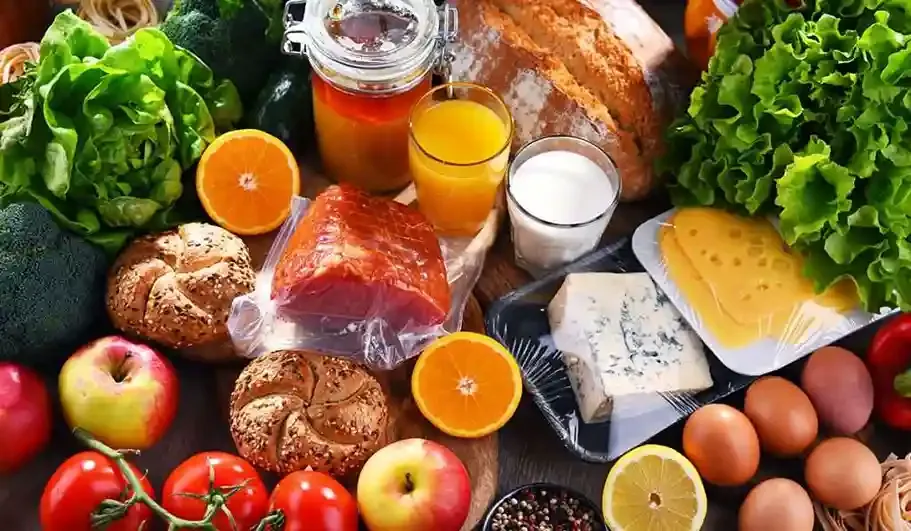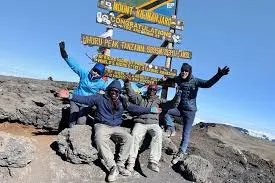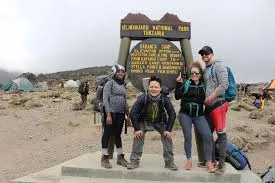Energy-Boosting Foods for Kilimanjaro Climbs: Fuel Your Trek
To keep your energy levels high on Kilimanjaro, focus on nutrient-dense, easy-to-digest foods that offer lasting fuel. Prioritize complex carbohydrates like oats, rice, and whole-grain bread for long-lasting energy. Include lean proteins such as nuts, eggs, or jerky to help with recovery. Healthy fats from sources like nut butter and avocado support endurance. Fruits and vegetables provide essential vitamins and minerals. Pack portable snacks like energy bars, trail mix, and dried fruit for quick boosts during the climb. This is a practical guide to energy-boosting foods that will fuel your 6 to 9-day trek with Capable Africa Tours.
Plan Your Kilimanjaro Trek Now
Why Nutrition Matters for Kilimanjaro Climbs
Proper nutrition fuels your stamina, supports muscle recovery, and combats altitude-related challenges like appetite loss. Capable Africa Tours emphasizes a balanced diet rich in complex carbohydrates, proteins, and healthy fats to maintain energy through Kilimanjaro’s five climate zones: rainforest, heath, moorland, alpine desert, and arctic summit. Below, we outline the best energy-boosting foods, meal plans, and dietary strategies for a successful climb.
Key Nutritional Needs for Kilimanjaro
| Nutrient | Purpose | Daily Intake (Approx.) | Food Examples |
|---|---|---|---|
| Carbohydrates | Primary energy source | 400–600g (50–60% of calories) | Oats, quinoa, pasta, dried fruits |
| Protein | Muscle repair, recovery | 80–120g (15–20% of calories) | Nuts, jerky, beans, eggs |
| Fats | Calorie-dense energy reserve | 80–100g (20–30% of calories) | Avocado, nut butter, dark chocolate |
| Electrolytes | Hydration, muscle function | 2–3g sodium, 3–4g potassium | Electrolyte tablets, bananas, soups |
Energy-Boosting Foods Checklist
- Complex Carbohydrates (4–6 servings/day): Oats, quinoa, whole-grain pasta, and sweet potatoes for sustained energy. Example: Instant oatmeal packets or Mountain House Pasta Primavera (400–500 kcal/serving).
- High-Protein Foods (2–3 servings/day): Nuts (almonds, peanuts), beef jerky, lentils, or eggs for muscle recovery. Example: Epic Beef Jerky or roasted chickpeas (20–25g protein/100g).
- Healthy Fats (2–3 servings/day): Avocado, nut butter packets, or dark chocolate for calorie-dense energy. Example: Justin’s Almond Butter packets or 70% cocoa bars (200–300 kcal/50g).
- Quick Energy Snacks (4–6/day): Energy bars, gels, or dried fruits for instant boosts. Example: Clif Energy Bars (250 kcal/bar) or GU Energy Gels (100 kcal/packet).
- Hydration Aids: Electrolyte tablets (Nuun, Hydralyte) or powders to maintain sodium and potassium levels. Aim for 3–4 liters of water daily.
- High-Altitude Snacks: Ginger chews or hard candies to combat nausea and stimulate appetite. Example: Gin Gins Chews.
Calorie and Weight Guide
| Food Item | Quantity | Calories (Approx.) | Weight (Approx.) |
|---|---|---|---|
| Instant Oatmeal Packet | 1 packet | 150–200 kcal | 40–50g |
| Clif Energy Bar | 1 bar | 250 kcal | 68g |
| Almonds | 100g | 580 kcal | 100g |
| Beef Jerky | 50g | 200 kcal | 50g |
| GU Energy Gel | 1 packet | 100 kcal | 32g |
Why Energy-Boosting Foods Are Critical for Kilimanjaro
Energy-boosting foods are critical for Kilimanjaro because your body faces long, steep climbs, high altitude, and fluctuating temperatures. Eating the right foods keeps your energy steady, helps prevent fatigue, and supports muscle function, so you can power through each stage of the trek without hitting a wall. They provide the fuel to keep you moving through diverse climates, from humid rainforests (80°F) to icy summits (0°F). Capable Africa Tours ensures trekkers get balanced, high-calorie meals, but supplementing with snacks like energy bars and nuts is key to maintaining stamina. Here’s why nutrition is non-negotiable and how to optimize your diet.
Benefits of Energy-Boosting Foods
- Sustained Energy: Complex carbs like oats release energy slowly, preventing fatigue during 5–8 hour trekking days.
- Muscle Recovery: Protein-rich foods like jerky repair muscle microtears from steep climbs.
- High-Altitude Performance: Calorie-dense fats (e.g., nut butter) support energy needs when oxygen is low.
- Hydration Support: Electrolytes prevent cramps and dehydration, critical at altitudes above 10,000 feet.
- Appetite Management: Small, frequent snacks combat altitude-induced nausea, ensuring consistent calorie intake.
Visualize Your Kilimanjaro Nutrition Plan
Watch this video to learn how Capable Africa Tours crafts energy-boosting meal plans to fuel your Kilimanjaro climb, from base camp to summit.
Top Tips for Nutrition on Kilimanjaro
To optimize your nutrition on Kilimanjaro, focus on eating small, balanced meals throughout the day that combine complex carbohydrates for energy, lean proteins for muscle recovery, and healthy fats for endurance. Pack easy-to-carry snacks like trail mix, energy bars, and dried fruit to keep your energy levels steady between meals. Drink plenty of water around 3–4 liters per day and use electrolyte powders or rehydration salts to replace minerals lost through sweat and prevent fatigue. Below is a practical list of top nutrition tips to keep you energized and healthy during your 6–9 day trek with Capable Africa Tours.
- Pre-Trek Prep: Practice your meal plan on training hikes to test digestion and preferences.
- Pack Smart: Use resealable bags for snacks to save space and keep food fresh.
- Eat Frequently: Consume 200–300 kcal snacks every 1–2 hours to maintain energy levels.
- Combat Altitude Nausea: Carry ginger chews or hard candies to stimulate appetite at high altitudes.
- Stay Hydrated: Use a 3-liter hydration bladder and add electrolyte tablets to water for better absorption.
- Supplement Meals: Bring personal snacks like energy gels for summit night, even with Capable Africa Tours’ provided meals.
Sample Meal Plan for Kilimanjaro
Capable Africa Tours provides balanced, high-calorie meals, but you can enhance your nutrition with personal snacks. Here’s a sample daily meal plan for a 6–9 day Kilimanjaro trek, designed to deliver 3,000–4,000 calories.
| Meal | Foods | Calories (Approx.) | Notes |
|---|---|---|---|
| Breakfast | Instant oatmeal, honey, dried fruits, tea/coffee | 600–800 kcal | High-carb start for energy |
| Morning Snack | Energy bar, mixed nuts | 400–500 kcal | Quick energy during trekking |
| Lunch | Pasta with sauce, boiled eggs, avocado | 800–1000 kcal | Balanced carbs and protein |
| Afternoon Snack | Dried mango, dark chocolate, energy gel | 300–400 kcal | Boost for late-day climbs |
| Dinner | Quinoa, lentils, vegetable soup, bread | 900–1100 kcal | Recovery-focused meal |
| Evening Snack | Beef jerky, ginger chews | 200–300 kcal | Pre-sleep energy top-up |
Ready to Conquer Kilimanjaro?
With Capable Africa Tours, climb Mount Kilimanjaro with confidence, fueled by energy-boosting foods and expert nutrition plans. Our experienced guides, tailored itineraries, and high-calorie meals ensure a safe, unforgettable adventure.
- 98% summit success rate with expert guides
- Nutritious, high-calorie meals tailored for trekkers
- Vegetarian and dietary options available
- Customizable routes for all fitness levels
- All-inclusive packages with meals and transfers
Limited spots available for Kilimanjaro treks — book now to secure your summit journey!
Plan Your Trek Now


